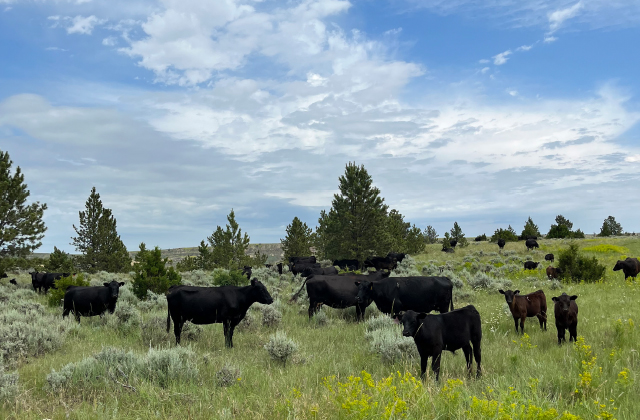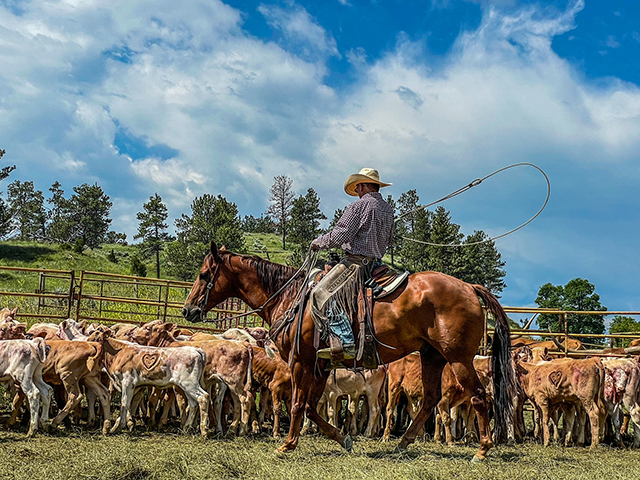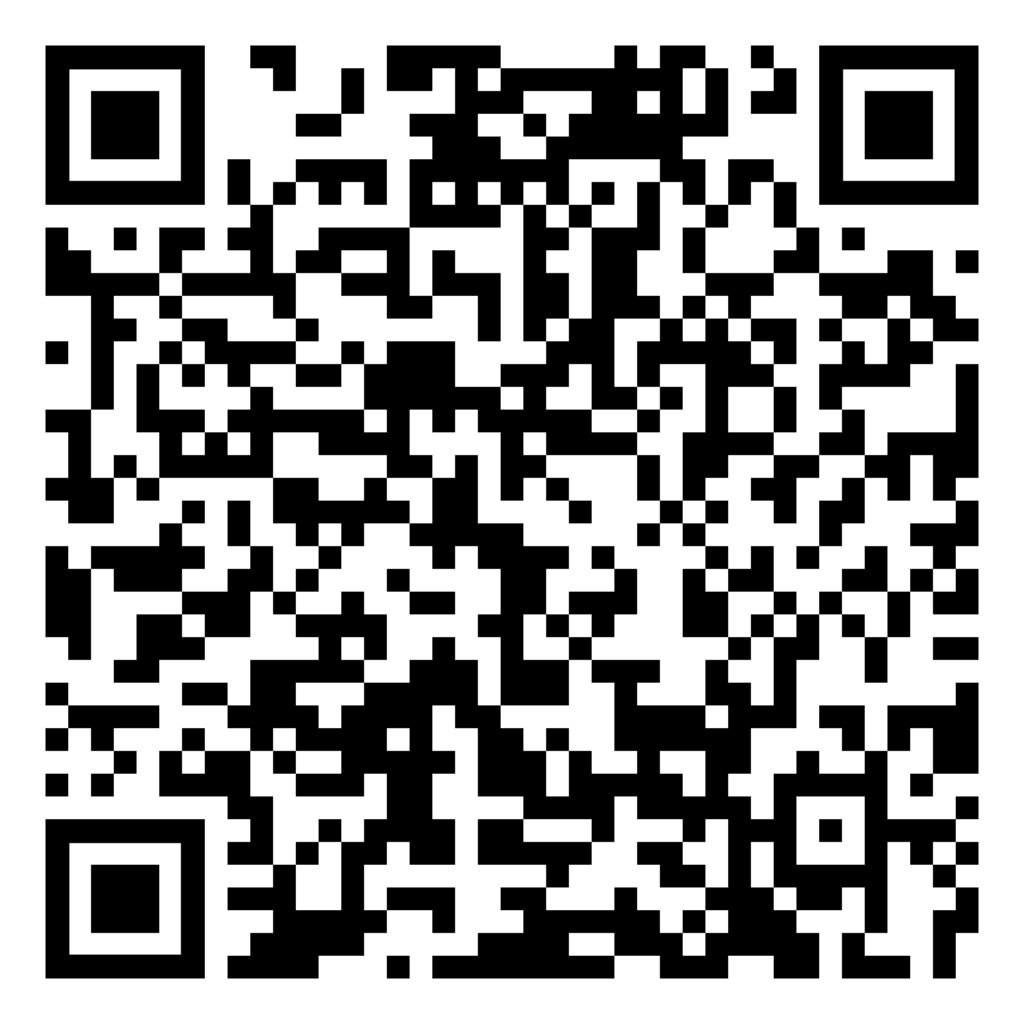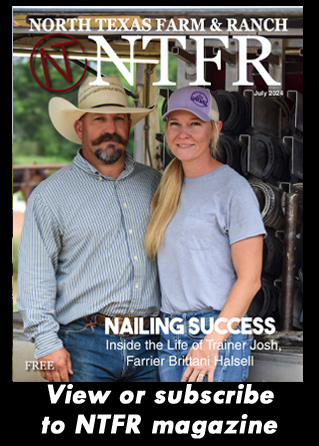Farm & Ranch
The Next Generation of Ranching

Steve Collins, Northern Prairies Chapter – Texas Grazing Lands Coalition, [email protected]
Family farms and ranches form a foundation of American agriculture and support the values and viability of our rural communities. The sustainability of family farms and ranches is now being challenged by many trends, including among other factors, an aging agricultural producer population and taxes. According to USDA, while 97 percent of all farms and ranches are family owned, only 30 percent of them will survive transfer to the second generation, and only 12 percent are still operating by the third generation.
In USDA surveys, while 69 percent of family farm and ranch operators expect to transfer the operation to the next generation, only 23 percent had a specific plan to do so. These statistics are even more troubling considering the average age of producers has increased substantially during the last 20 years resulting in 70 percent of all United States farm and ranch land being transferred during the next 20 years. The pending reduction of the estate tax exemption to $5,000,000 in 2026 may further increase the number of family farms and ranches subject to forced sale.
These trends are understandable due the fact the day-to-day operation of a family farm or
ranch involves long hours leaving little time for estate and transition planning. Complicated legal issues, changing tax rules, and family dynamics, make planning by families for the preservation and succession of the family farm or ranch difficult. As a result, many busy families fail to address the issue until the family member primarily responsible for the operation is unable to fill that role. By delaying the discussions and planning of these transitions, many attractive options are missed and sometimes the continuation of the family farm or ranch is put at risk. In a recent survey of Texas family farmers and ranchers by
Texas A&M AgriLife Extension the two most needed education topics were estate planning and succession planning.
In an effort to assist family farmers and ranchers in developing a plan to preserve their land for future generations, the Northern Prairies Chapter of the Texas Grazing Land Coalition, is
offering its second annual Next Generation of Ranching: Generational Transition Conference.
The Northern Prairie Grazing Land Coalition (NPGLC) is a non-profit organization dedicated
to supporting sound grazing land stewardship and assisting owners and managers of private grazing land. A key part of sustaining grazing land and family ranches is planning for their future operation and ownership.
While there are many options available to develop and implement a transition plan, all successful transition plans will include the following elements:
Define the family’s goals and principles regarding the family farm or ranch.
Family-members’ current employment, experience, life-style and priorities must be respectfully addressed in the course of developing a plan. Many frank and sometimes difficult family discussions may be required to define the common goals and principles to be incorporated into the transition plan.
Development of a family farm balance sheet.
Compiling the balance sheet will require listing all assets, such as land, equipment, livestock,
facilities, bank and investment accounts, and insurance policies, etc. In addition, outstanding debts and other financial obligations will be included in the balance sheet. The “balance sheet” should also consider the intangible assets such as the experience and talents of each of the family members.
Build a team of professional counselors and advisors.
The assembling of a team of professionals possibly including an attorney, an accountant, a
management advisor, an insurance agent, and others. The team members should work to develop a transition plan which meets the family’s goals within the constraints of family finances and family dynamics.
The Generational Transition Conference will provide information and resources for families to
begin taking the steps required develop a successful transition plan for the family farm or ranch. The conference will be held in Wichita Falls on Oct. 27, 2023.
This conference is coordinated and organized by the Generational Transition Committee of Northern Prairies GLC. Capital Farm Credit is assisting with sponsorship, and Stephanie Fryer, a Relationship Manager with Capital Farm Credit, will serve as moderator at the conference.
At the conference, professionals, with expertise and experience in helping families develop a plan to meet their goals for their farm or ranch, will present information, options and resources available to develop a transition plan.
Garrett Couts, an attorney with the law firm Brady & Hamilton in Lubbock, will address estate planning issues and options. Garrett comes from an agricultural background and his practice includes estate planning for family farmers and ranchers. Ethan Smith, a management consultant who works with family farmers and ranchers will address the management issues involved in succession planning. Brandt Self, a CPA whose practice focuses on agricultural clients, will discuss the tax aspects of transition planning. The Conference is open to all family farmers and ranchers at no charge. However, seating is limited. Requests for information and registration can be found using the QR code or emailing [email protected].
Farm & Ranch
Ag Elsewhere: Wyoming

By Tressa Lawrence
Ranchers across northeast Wyoming and the surrounding areas saw record moisture levels in 2023. The year 2024 has seen significantly less moisture to date.
Farm & Ranch
Ag Elsewhere: Montana

By Lindsey Monk
People are finishing up brandings. Here, Danny Walter is shown getting it done.
Farm & Ranch
Animal Disease Traceability

By Barry Whitworth, DVM
On July 6, 2020, the United States Department of Agriculture Animal and Plant Health Inspection Service (APHIS) posted in the Federal Register a proposal that radio frequency identification tags be used as official identification for cattle and bison. Following a period for public comment, the USDA APHIS released a statement on April 24, 2024, with the amended animal disease traceability (ADT) regulation for cattle and bison. The full press release may be found at https://www.aphis.usda.gov/news/agency-announcements/aphis-bolsters-animal-disease-traceability-united-states. Under the new rule, cattle and bison will need to be identified with tags that are both visual and electronic.
The USDA defines ADT as knowing where diseased and at-risk animals are, where they have been, and when the animal disease event took place. A system that allows for efficient traceability of livestock in the United States is essential for animal health and reducing the economic effect of a foreign animal disease outbreak and other diseases on livestock producers as well as others whose well-being depends on livestock production.
To read more, pick up a copy of the July issue of NTFR magazine. To subscribe by mail, call 940-872-5922.
-

 Country Lifestyles1 year ago
Country Lifestyles1 year agoScott & Stacey Schumacher: A Growth Mindset
-

 Country Lifestyles7 years ago
Country Lifestyles7 years agoStyle Your Profile – What your style cowboy hat says about you and new trends in 2017
-

 Equine10 months ago
Equine10 months agoThe Will to Win
-

 HOME7 years ago
HOME7 years agoGrazing North Texas – Wilman Lovegrass
-

 Country Lifestyles4 years ago
Country Lifestyles4 years agoAmber Crawford, Breakaway Roper
-

 Outdoor9 years ago
Outdoor9 years agoButtercup or Primrose?
-

 Country Lifestyles8 years ago
Country Lifestyles8 years agoDecember 2016 Profile, Rusty Riddle – The Riddle Way
-

 Country Lifestyles8 years ago
Country Lifestyles8 years agoJune 2016 Profile – The man behind the mic: Bob Tallman







